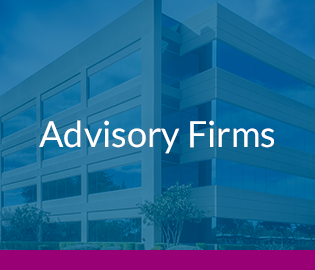 Most financial advisory firms believe technology is critical to the success of their firm. After all, the right software and digital tools can streamline many mundane but necessary administrative tasks, thereby enabling advisors to spend more time with their current and prospective clients.
Most financial advisory firms believe technology is critical to the success of their firm. After all, the right software and digital tools can streamline many mundane but necessary administrative tasks, thereby enabling advisors to spend more time with their current and prospective clients.
That said, technology is not without its downfalls. I’ve seen many firms try to use tech tools to reduce the human footprint inside their firms. While this outcome may be possible in the long run, it’s ill-advised. Instead, technology should be used to enhance the capabilities of your people — not to replace them.
At its heart, an advisory firm is a people business. The value the firm delivers to its clients is almost entirely driven by its people. Just as advisors look for the best assets to meet a client’s investment goals, firm owners should engage a strategy for the firm’s human capital, and look for the best people to support the firm’s value to clients.
It’s important to understand that managing human capital is about more than just compensation. Every firm needs to leverage a unique combination of rewards and incentives that works best for that firm, its people and its clients. Your human capital strategy should cover the key areas of managing your team members, including recruiting and hiring, compensation and rewards, and the management, development and retention of employees. Technology is a key component of any human capital equation, and firm owners and partners can use it in a variety of ways to attract today’s job seekers and to retain your key talent.
For instance, consider the challenges in managing the newest generation of workers. They tend to place a high value on flexibility in a job. This doesn’t mean they don’t want to work hard. It means many younger workers expect to have meaningful lives both inside and outside of work, and they want to harness the flexibility that technology provides to their personal and professional lives.
This demand for flexibility can create a challenge for firms. How can you provide a flexible, open work environment, while also ensuring a productive and engaged workforce? Tech is the answer.
The utilization of technology allows firms to incorporate alternative work arrangements for how, when, and where work gets done without compromising the overall client experience. Demographic trends indicate that demand for alternative or flexible work arrangement will probably continue to rise. Indeed, many millennials who put off marriage and childrearing during the great recession may now be looking to start their own families. Meanwhile, those aging out of the workforce could seek out flexibility to take care of an aging parent or relative. Examples of FWAs include:
- Flextime: a situation in which an employee works eight hours per day, but with flexibility in an their schedule. Some employees, due to family or personal obligations, or preferences, may work very early in the morning and leave earlier in the afternoon. Conversely, others may prefer to start later and work into the evening.
- 10-hour day/four-day workweek: describes employees who work 10 hours per day and reduce the workweek to four days.
- Nine-hour day/half-day on Friday: employee works nine-hour workdays Monday through Thursday and four hours each Friday.
- Job-sharing: two employees are assigned to the same job that is equivalent to one full-time employee. The position is shared between the two employees. Job-sharing, as an alternative work schedule, must ensure the continuity of the work being done at the same workstation, with two individuals working as a team, to accomplish one full-time position’s duties.
There are a lot of tools to ease collaboration and communication among employees. Slack and Microsoft Teams, for example, are redefining how employees communicate and manage projects. Additionally, Dropbox and Google Docs make sharing and transferring files secure and instantaneous. Moreover, if you have these tools, be sure to use them! Put the necessary training and systems in place so that if a new technology is useful, people can understand and leverage it to help with efficiency and results. This allows your firm to easily build teams and encourages collaboration across every department.
Unfortunately, there is still a mindset that an employee needs to be at their desk and putting in face time to be truly productive and contribute to the firm. This mindset can prevent firms from allowing employees to work remotely or share a job. The key to success though, lies in creating a strong, flexible communication network at your firm, while simultaneously maintaining accountability.
How can you build accountability into a flexible work environment?
Be clear and upfront with employees about their roles and expectations. To create this transparency, make sure you develop well-defined job descriptions for your employees. These descriptions are useful tools that explain the tasks, duties, functions and responsibilities of a position. They detail who performs a specific type of work, how that work is to be completed and the frequency and the purpose of the work as it relates to the organization’s mission and goals. Make sure to list required technology, including specific software programs, social media platforms and organizing systems in your job descriptions. This detail underscores the importance of technology in the roles, and appropriately sets expectations for proficiency in certain software and systems.
I encourage firms to designate at least one employee as a subject matter expert for each technology system or software program utilized by the firm. These point people are an integral part of the implementation of technology. Their responsibilities include interfacing with tech vendors, staying current on software updates and training the rest of the team. I recommend rewarding these tech responsibilities through your incentive plan.
Since most firms fall short of ensuring that employees are fully trained on the different software packages they have purchased, I also suggest creating training goals and utilizing e-learning programs to ensure employees are properly trained. After all, why spend money on these programs and packages unless they’re going to be used? Goals and objectives tied to tech-training targets can then be rewarded through your compensation program.
Finally, don’t forget to involve your employees in the tech decision-making process. Because employees use the systems on a regular basis and likely know them better than you, their opinions matter. Soliciting input can help you make better choices. If they buy in early, the implementation phase will go more smoothly. It also will help to create engagement with your team that can lead to the retention of talent, by communicating that they have an important role in the firm’s investment decisions.
Investments in technology can’t be made independently from investments in your people. Firms need to hire the right people with the right skills and put them in the right jobs. As a firm’s tech environment evolves, employees must also be trained and developed to make the most of these powerful new tech resources being put in place.
Kelli Cruz is a Financial Planning columnist and the founder of Cruz Consulting Group in San Francisco. Email her at kelli@cruzconsultinggroup.com or follow her on Twitter at @KelliCruzSF






